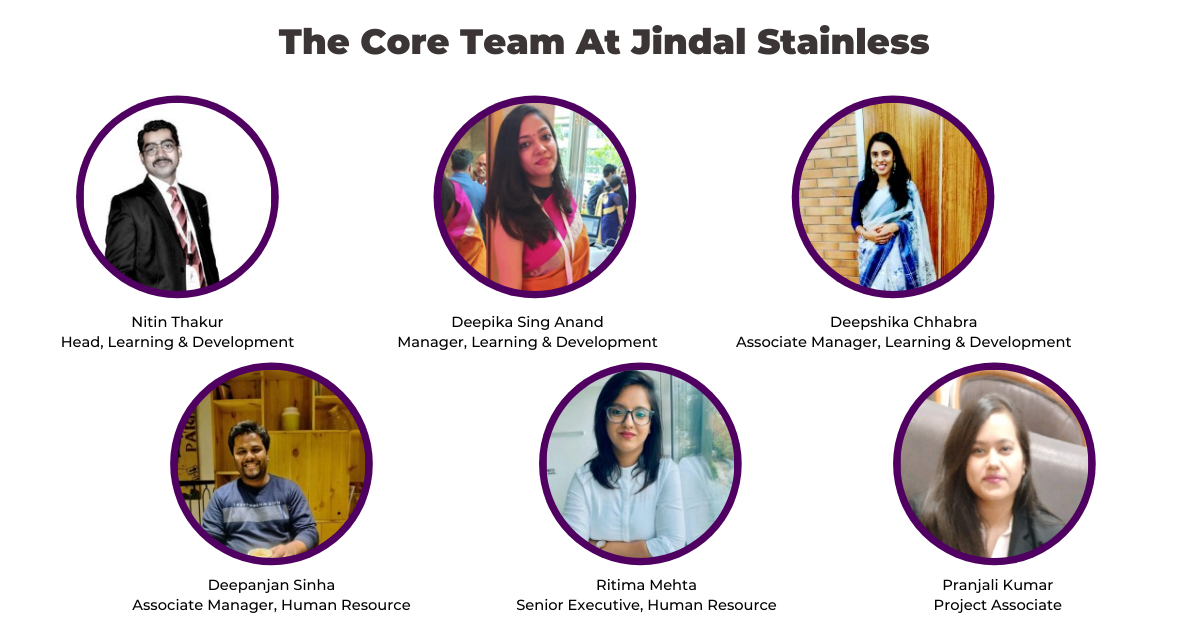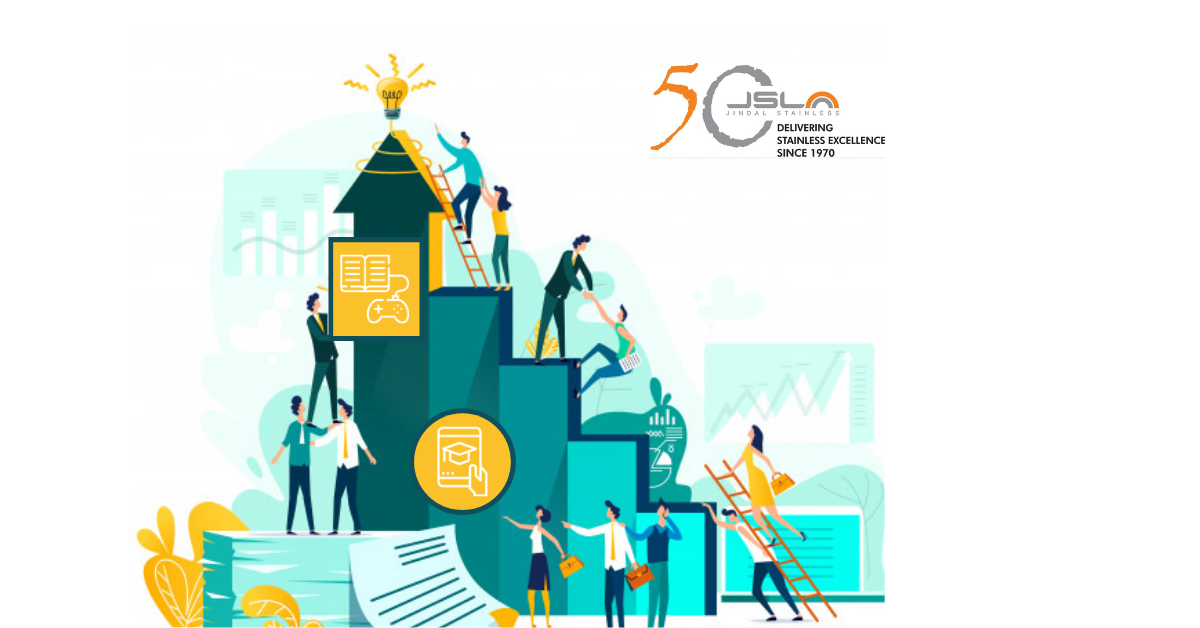As a leader in the global stainless steel industry, Jindal Stainless (JSL) was looking to update its leadership competencies based on which the organization could identify, develop and retain future leaders.
In line with its future vision, the leadership team set out to identify new-age competencies and leadership behaviours that would propel its growth and give more headway for development among its junior, mid-level and senior-level leaders across functions.
The Company partnered with InspireOne & Master-O to plan and implement a competency development intervention aimed at creating awareness about their new set of re-defined managerial competencies among senior managers and managers, also known as RL2 employees.
The rationale behind competency development:
Driven towards making their organization and employees more solution-focused and future-proof, the Company’s L&D team re-defined Jindal Stainless’ list of core competencies.
The five new competencies included:
● Achievement Drive
● Communication
● Learning Agility
● Customer Focus and
● Creativity & Inclusion
More specifically, the main aim of this intervention was to create awareness of all the five competencies specific to RL2 employees that would articulate desired capabilities central to their role.
Jindal Stainless’ Journey Of Competency Development:
Keeping the main objectives and expectations in mind, a 14-week long intervention was co-created by the HR, L&D and leadership team of Jindal Stainless along with InspireOne.
The intervention included an Awareness Phase & a Development Phase and covered 700 current & future leaders, divided into 3 cohorts.
- Awareness Phase:
As the name suggests, this six-week-long phase was designed to create awareness about the five newly-defined competencies. It started with a live kick-off session facilitated by an instructor per cohort. Post this, the five competencies were launched in the form of Microskills via Master-O, a digital learning and gamification platform. This was done to ensure that the learners would understand, reinforce and retain the essential information of each competency through interactive microlearning and game-based assessments.
2. Development:
After the completion of the first phase, analytical learning inputs from Master-O were provided to each participant which highlighted their performance in each Microskill. This, in consultation with their respective supervisors, led to finalizing two competencies for each participant. These two competencies were then identified for competency lab sessions which involved participants undertaking projects based on the said competencies. The progress of the participant’s project was tracked in an online action planning platform, which also kept a track of the project objectives, expectations and progress. Alongside this, virtual learning sessions were conducted to upskill participants & develop a deeper understanding & application on the two chosen competencies.
Developing Competencies Through Digital Learning Aids And Game-Based Assessment
Digital learning played a significant role in both the phases of the intervention. In the 1st phase, the five Microskills were rolled out via Master-O. This involved converting traditionally theoretical and static competency-based content into interactive microlearning aids to maximize retention among learners. Each learner had to go through all the five Microskills, which were also designed to include:
- Gamified Learning:
The learning experience involved interactive gaming which made learning and understanding the competencies easier and engaging for the learners.
2. Ongoing Learning Engagement:
Digital learning content consisted of psychological nudges to increase participation, utilization and retention of knowledge for each competency. For instance, smart alerts and push notifications were used to ensure sustained engagement of learners.
3. Effective Learning:
Easy- to-understand and bite-sized content made it easier for learners to absorb and understand the information. Master-O has over 20 learning aids to prevent learner monotony.
4. Game-based assessments:
Micro-interactions and casual game designs were also used to evaluate the performance of the learners, assess their strengths and ensure active retention of the competencies.
5. Leaderboards:
Performance-based dashboards with the progress and performance scores of the learners were used to induce healthy competition and ensure 100% mastery of skills. Apart from completion, the leaderboard also provides other critical insights such as time number of attempts, time is taken et al.
Furthermore, in the phase of development, Master-O was used to deliver spot quizzes, application exercises and gamified learning modules to assess the absorption and retention of knowledge gained during the virtual sessions of the competency labs.
Impact Of Leveraging digital Learning
The awareness phase of learning was marked by a very high completion rate of 99%. It was further recorded that over 700 hours of learning took place online & virtually. The interactive and bite-sized modules on each competency ensured:
- High Adoption Rate:
In less than 15 days since launch, the average login was above 90% & completion was above 80%! This implied that the learners had an appetite for digital enablement and found such experience intuitive and beneficial.
2. High Engagement:
Learners took more than 10 sessions using digital learning O which implied that once these learners were getting accustomed to microlearning, they had a 90% probability to habitually learning via digital learning.
3. High Percentage Of Learners In The Productive Zone:
Maximum number of learners invested 30-60 minutes in learning on Master-O, but each learning session lasted two to five minutes at a time. This format of bite-sized but highly repetitive learning was considered to be productive as learning took place during a person’s downtime during the day and resulted in maximum engagement and retention.
Way Forward For Digital Learning At Jindal Stainless:
As the organization readies its future leaders and the workforce in an increasingly digital & competitive environment, the L&D and leadership team look forward to accelerating this adopting of digital learning and new engaging ways to upskill its workforce on other L&D and business initiatives.
With companies putting added pressure to curtail discretionary & essential investments, Jindal Stainless found a way to pioneer a new approach to learning – holistic one, yet cost-effective and enhanced the learning outcomes.
The L&D team continues to further invest its capabilities in driving newer skills not only across the workforce but within the learning & content team itself, be it on data science and AI or microlearning and gamification.

